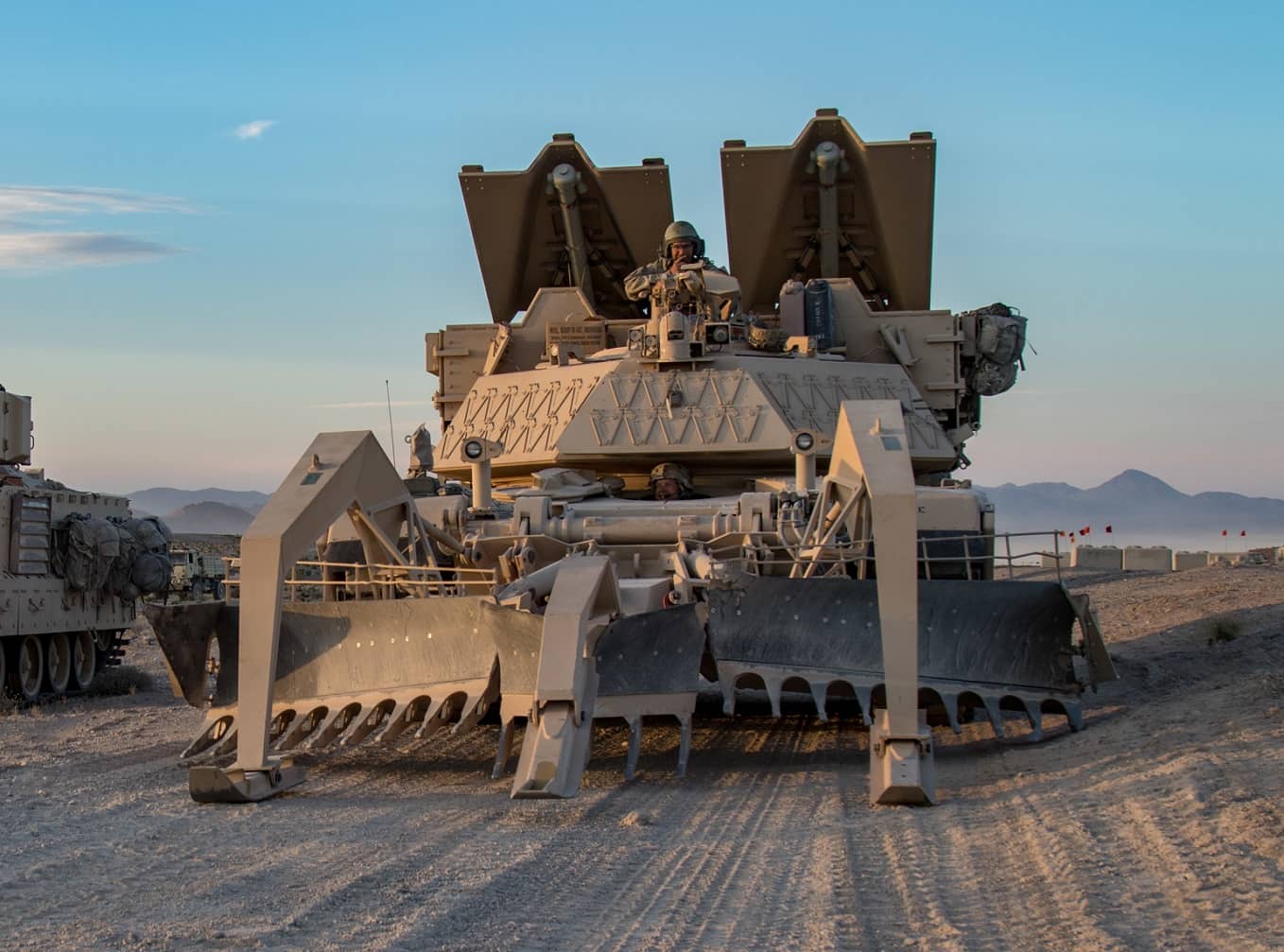
The U.S. Army is seeking to integrated tactical unmanned aircraft systems (UAS) with its heavy armored obstacle breaching system, called the Assault Breacher Vehicle.
The Army Contracting Command plans to integrate small tactical UAS with the heavy armored mine- and explosives-clearing vehicle, based on the M1 Abrams-chassis, to increase its battlefield survivability and combat effectiveness.
On Aug. 26, the service made public its update draft request in support of obtaining Unmanned Aerial Systems (UAS) to be embedded with the Assault Breacher Vehicle (ABV) platform through a notice posted on the U.S. government’s main contracting website.
“The primary objective of the UAS will be to carry a smart radio to retransmit a Radio Frequency/Signal and to provide additional situational awareness (vision) to troops that would be operating from a concealed and covered location,” the notice reads.
The ABV is a heavy engineering vehicle in U.S. Army and Marine Corps services.
With increased capabilities and efficiency, the ABV greatly reduces the clearing time from hours to minutes. This allows assets in the rear to advance forward faster to provide additional support or aid as needed.
It consists of an M1A1 Abrams tank hull; a unique turret with two Linear Demolition Charge Systems (employing two Mine Clearing Line Charges (MICLIC) and rockets); a Lane Marking System (LMS); Integrated Vision System; and a High Lift Adapter that interchangeably mounts a Full Width Mine Plow (FWMP) or a Combat Dozer Blade.
ABV, which requires a crew of two Soldiers, improves the mobility and survivability of combat engineers while having the speed and ability to keep pace with the maneuver force. It creates a tank-width cleared lane through a minefield by launching and detonating one of its MICLIC systems across the minefield, then proofing the lane with its FWMP while marking the cleared lane with its LMS.